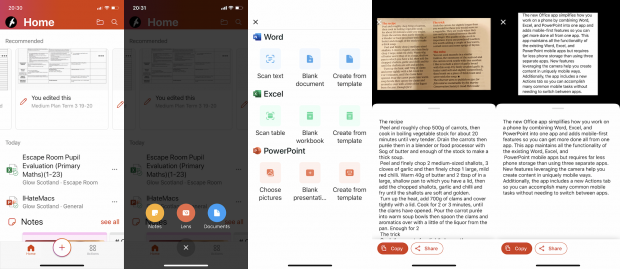This blog was written for the Voices in Education Series and is reproduced here with the kind permission of Odgers Berndtson.
This Spring Term the Schools Practice at Odgers Berndtson is pleased to present the second series of articles for its Voices in Education initiative. These articles are written by a number of leading voices across the schools sector. They have been written to start conversations about important challenges, opportunities and ideas within the schools sector today. In this article, Robin Macpherson, Assistant Rector at Dollar Academy, writes about the importance of understanding memory as teachers.
“Memory is the residue of thought”
Daniel T. Willingham
“The aim of all instruction is to alter long-term memory. If nothing has changed in long-term memory, nothing has been learned.”
Sweller, Clark and Kirschner
I’m a teacher, not a psychologist. If you work in a school it’s unlikely that you know much about psychology either. It’s doubtful that you did any cognitive psychology in your training to be a teacher, as this is largely left off the curriculum. So why then should we all be spending a lot more time looking at cognitive psychology if we want to be better teachers?
The first thing to make clear is that this isn’t a new thing. It may be a recent addition to pedagogy in school classrooms but as a discipline it’s well over a hundred years old. Ebbinghaus produced seminal work on the ‘forgetting curve’ in the 1880s and 1890s, which showed that memory traces have a half-life, and in order to be strengthened we need to retrieve the memory to refresh and strengthen it. In 1967, Ulric Neisser wrote one of the most important books in education history, simply called ‘Cognitive Psychology’. In academic circles it pushed the science of learning more towards internal mental processes and away from behaviourism, which sought to explain learning through responses to external stimuli. Essentially, it means people in universities knew – more than half a century ago – that it was possible to measure brain processes in order to advance our knowledge of how we learn.
What accelerated this was the development of computer technology. It’s often said that our brains are like computers, but in fact it is more accurate to state that computers are like our brain. Cognitive psychology is about the architecture of memory: we process information through our working memory (which is very limited) and store it in our long term memory (which is potentially limitless). We can bring back information from storage into the working memory in order to use it. Computers process things (measured in RAM) but store things on a hard drive which is much bigger in scope. The analogy seems to work, even if it breaks down when you explore the mechanics, but there is no doubt that as we started to build artificial brains (computers) we developed a better understanding of our own minds.
Incredibly, it has only been in the past decade that scientific findings in the field of cognitive psychology have begun to shape classroom practice on a wider scale. This has much to do with the disconnect between the research that is produced in academia and the professional knowledge and practice of teachers. Thankfully, we’re getting much better at this.
The breakthrough can be attributed to a number of books but I think a key text is ‘Make it Stick’ by Brown, Roediger, and McDaniel. In 2002, Henry Roediger was appointed to head up a team of eleven psychologists (including Mark McDaniel) by the James S McDonnell Foundation in St Louis, Missouri. Their task was to lead a study in applying cognitive psychology to educational practice. A decade later, their work was ready. However, unlike previous studies, this one made its way into mainstream education in schools. Roediger and McDaniel teamed up with journalist Peter Brown and wrote ‘Make It Stick’, and finally there was a volume that took high end, rigorous scientific research and made it accessible to teachers. It was a watershed moment.
There are many other books that we could point to here: Daniel Willingham’s ‘Why Don’t Students Like School?’ (2010) is arguably the true pioneer, and Benedict Carey’s ‘How We Learn’ (2014) is also wonderfully accessible. However, the overall point is clear: in the past decade the science of learning has infiltrated the classroom and this quiet revolution is to be embraced. If you are a teacher reading this and are thinking “I know nothing about cognitive psychology” then the good news is that you can get up to speed very quickly. You don’t need to be a scientist, you just need to open your mind and read one of these books. Another, more recent, classic is ‘Understanding How We Learn: A Visual Guide’ by Weinstein, Sumeracki and Caviglioli, who are members of the excellent Learning Scientists collaborative. Get on their website as soon as you have finished this blog.
So what does this actually mean for classroom practice? Crucially, it means structuring learning around the architecture of memory. Awareness of the limitations of working memory is vital. Current thinking is that we can hold at best 4 pieces of information in our working memory at a time, and to try to cram more into this will overload your pupils’ capacities – no matter how bright they are. When I started teaching less able pupils were described as those who had problems with working memory. Newsflash – we all do. None of us has a great working memory. This is why Dylan Wiliam described Sweller’s cognitive load theory as being the most important thing any teacher can know. I think about 95% of the PowerPoints I see teachers produce – and the way they deliver them – violate this key principle. There’s a brilliant blog entitled ‘Clean up your mess’ by Robert Macmillan (@robfmac on Twitter) based on his talks at researchED Scotland if you want to see how to do presentations properly.

Further evidence is provided in a key paper by Dunlosky et al in Scientific American Mind called ‘What works, what doesn’t’ (2013). This explores the methods used by students to revise for assessments and how effective they are. How often have you had a pupil bemoan a poor test score, pleading that they worked really hard? No doubt they did, but they used ineffective techniques. Using highlighters and rereading notes – beloved of many – are an almost total waste of time. Retrieval practice – known as the testing effect – is extremely effective. Teachers who make use of this in everyday lessons build highly effective long term memory and can achieve outstanding results with pupils of all ability ranges. This is important – it can be an absolute game-changer. If you want to know more, read Kate Jones’ excellent recent book ‘Retrieval Practice: Resources and Research for Every Classroom’ (2020).
So, what we’re faced with now are the massive opportunities afforded by over a century of scientific research, all of which is very actionable in the classroom. As I mentioned before, most universities completely ignore it in their teacher training programmes. I am hugely in favour of connecting research about education to the practice of teachers, and things are moving in this direction. However, it is a slow burn process and if you’re a school leader you will need to think carefully about how to embed this in the culture of learning in your unique context. A whole school approach works much better than individuals ploughing lonely furrows. My advice is to get reading, share with colleagues, and see the benefits for yourself. Teaching, in truth, is not a fully research-informed profession. Cognitive psychology shows us what might be possible if we can connect schools and universities in a genuine partnership about the science of learning.
Robin Macpherson is currently Assistant Rector at Dollar Academy, and from August 2020 will be Head of College at Robert Gordon’s College in Aberdeen. He is the co-author of ‘What does this look like in the classroom? Bridging the gap between research and practice’ (2017) with Carl Hendrick and speaks and blogs about educational issues. His Twitter handle is @robin_macp.




 I am delighted to be starting a new consulting project through Cetis LLP with the
I am delighted to be starting a new consulting project through Cetis LLP with the 